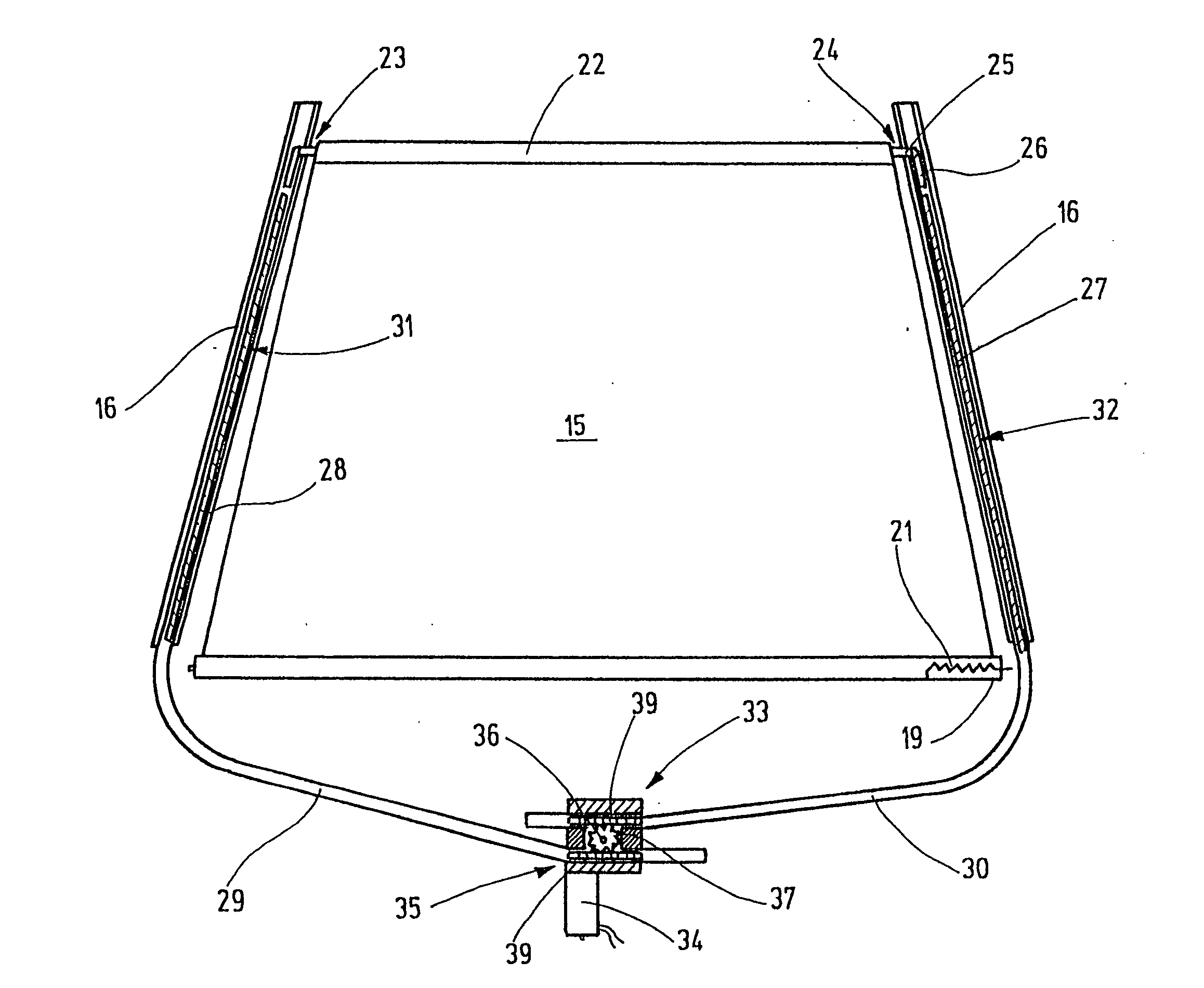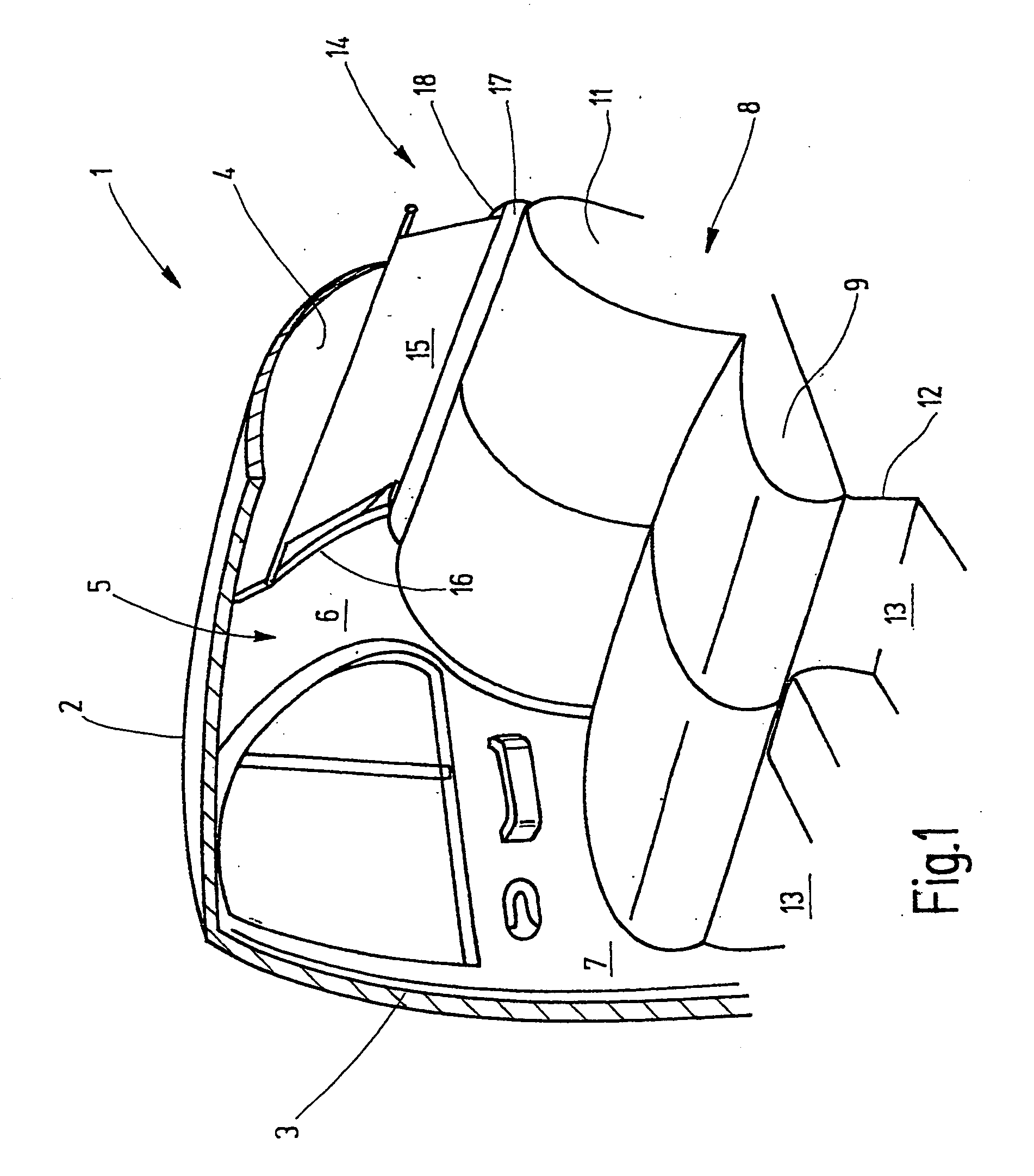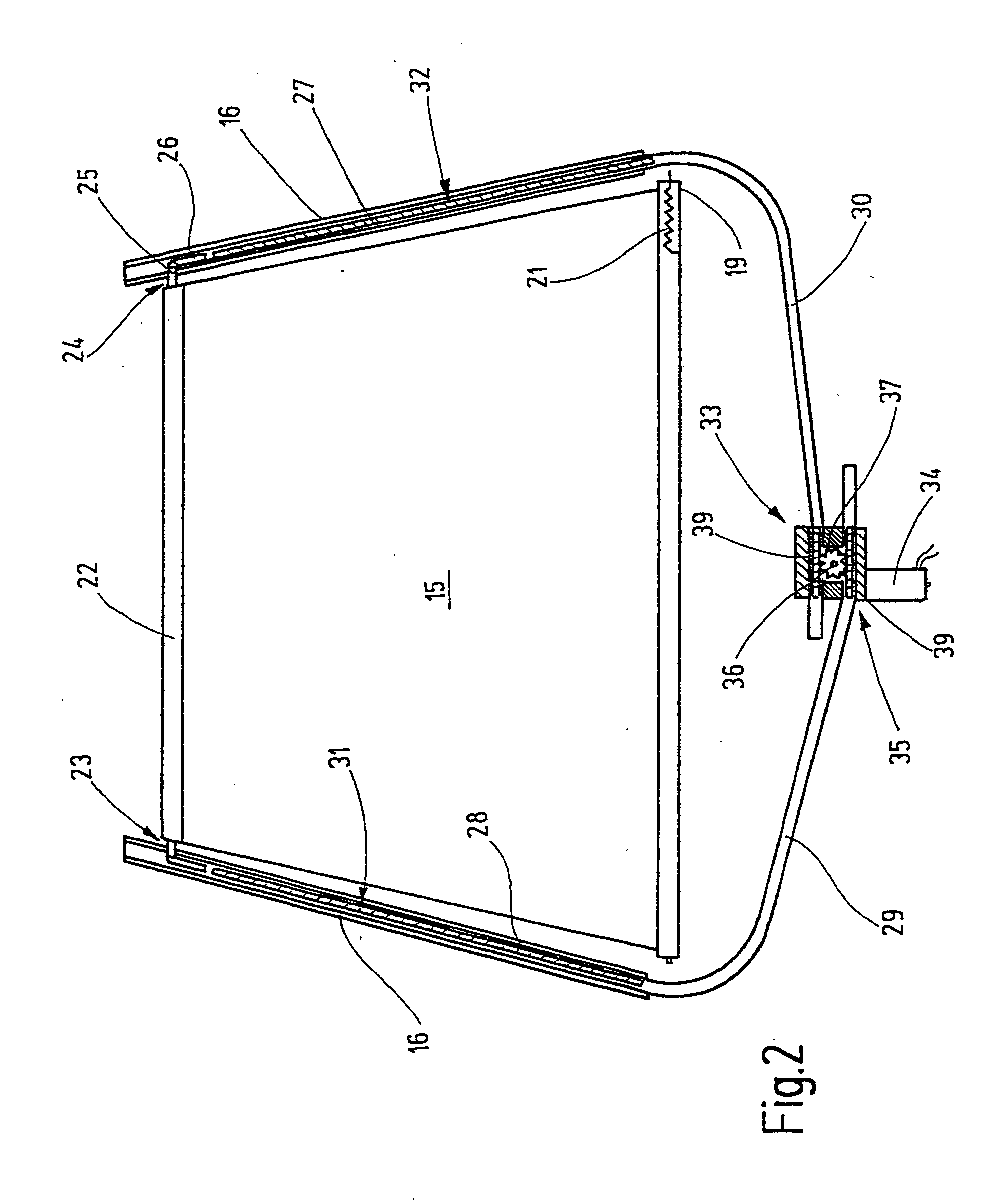Injection-molded plastic guide rail
a technology of injection molding and guide rails, which is applied in the field of rear window shades, can solve the problems of unsatisfactory relative movement of plastic parts and aluminum guides, inability to adjust the friction between plastic guides and aluminum guides, and certain difficulties when integrating the guide rail into the inside lining, etc., and achieves constant width and a favorable force gradient
- Summary
- Abstract
- Description
- Claims
- Application Information
AI Technical Summary
Benefits of technology
Problems solved by technology
Method used
Image
Examples
Embodiment Construction
[0024] Referring now more particularly to FIG. 1 of the drawings, there is shown the inside of a passenger car having a rear window shade in accordance with the invention The passenger car includes a body section 1 that includes a roof 2, from which a B-column 3 laterally extends downward to a floor group, not shown. The roof 2 transforms into a rear window 4 on its rear edge. The rear window 4 laterally ends on a C-column 5 that is spaced apart from the B-column 3. The C-column 5 carries the inside lining 6.
[0025] As will be understood by persons skilled in the art, between the B-column 3 and the C-column 5, a right rear door 7 is conventionally hinged to the B-column 3. A rear bench 8 consisting of a seat 9 and a back rest 11 is arranged at the height of the right rear door 7. The rear seat 9 lies on a base surface 12 that forms part of the floor group, wherein a certain leg room 13 is created in this floor group in front of the rear seat 9.
[0026] A rear window shade 14 is mount...
PUM
 Login to View More
Login to View More Abstract
Description
Claims
Application Information
 Login to View More
Login to View More - R&D
- Intellectual Property
- Life Sciences
- Materials
- Tech Scout
- Unparalleled Data Quality
- Higher Quality Content
- 60% Fewer Hallucinations
Browse by: Latest US Patents, China's latest patents, Technical Efficacy Thesaurus, Application Domain, Technology Topic, Popular Technical Reports.
© 2025 PatSnap. All rights reserved.Legal|Privacy policy|Modern Slavery Act Transparency Statement|Sitemap|About US| Contact US: help@patsnap.com



